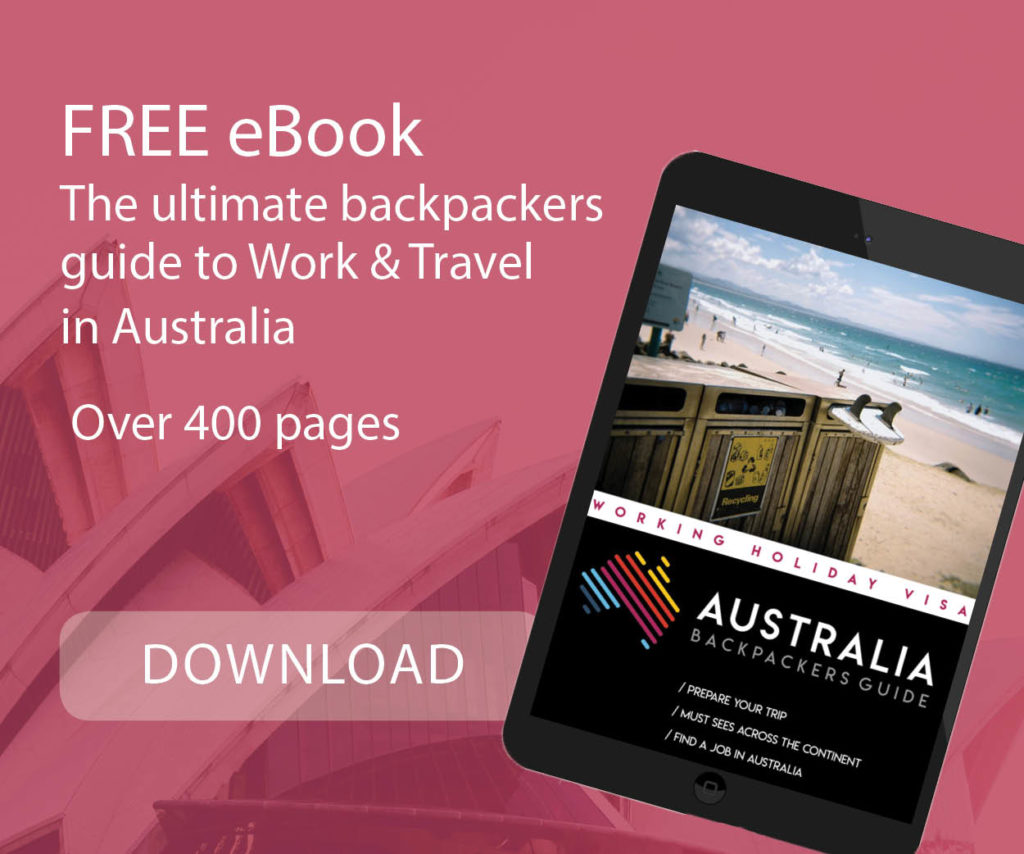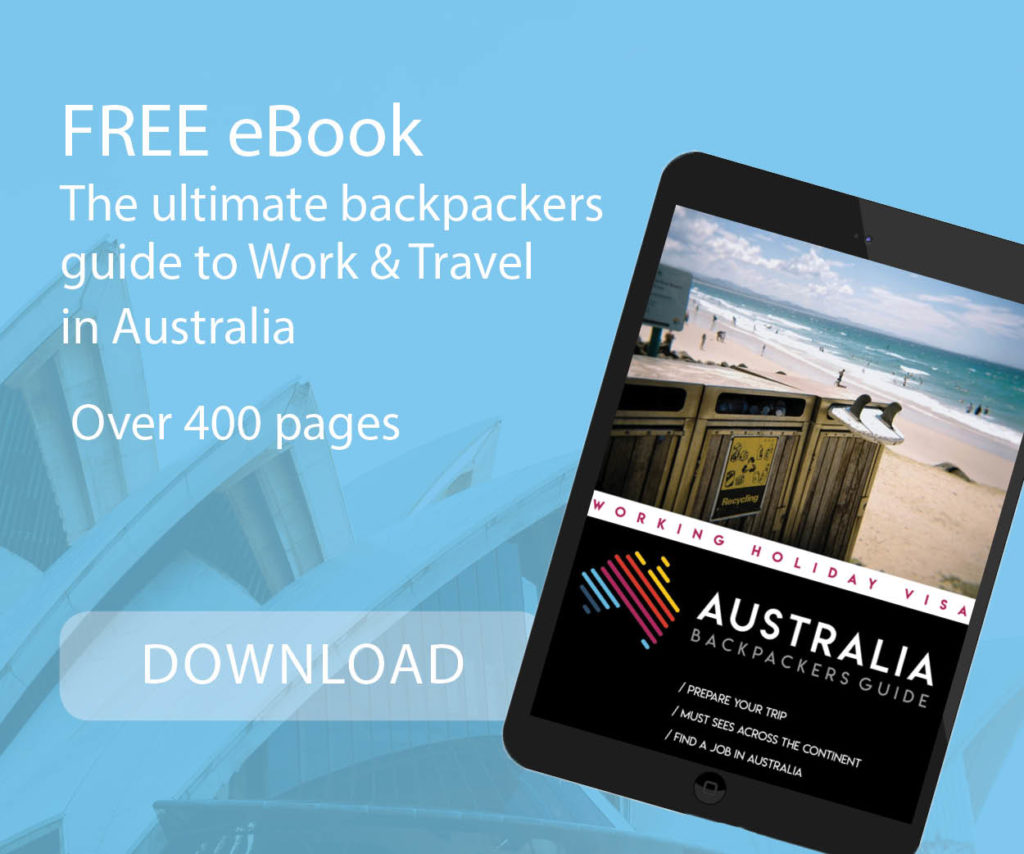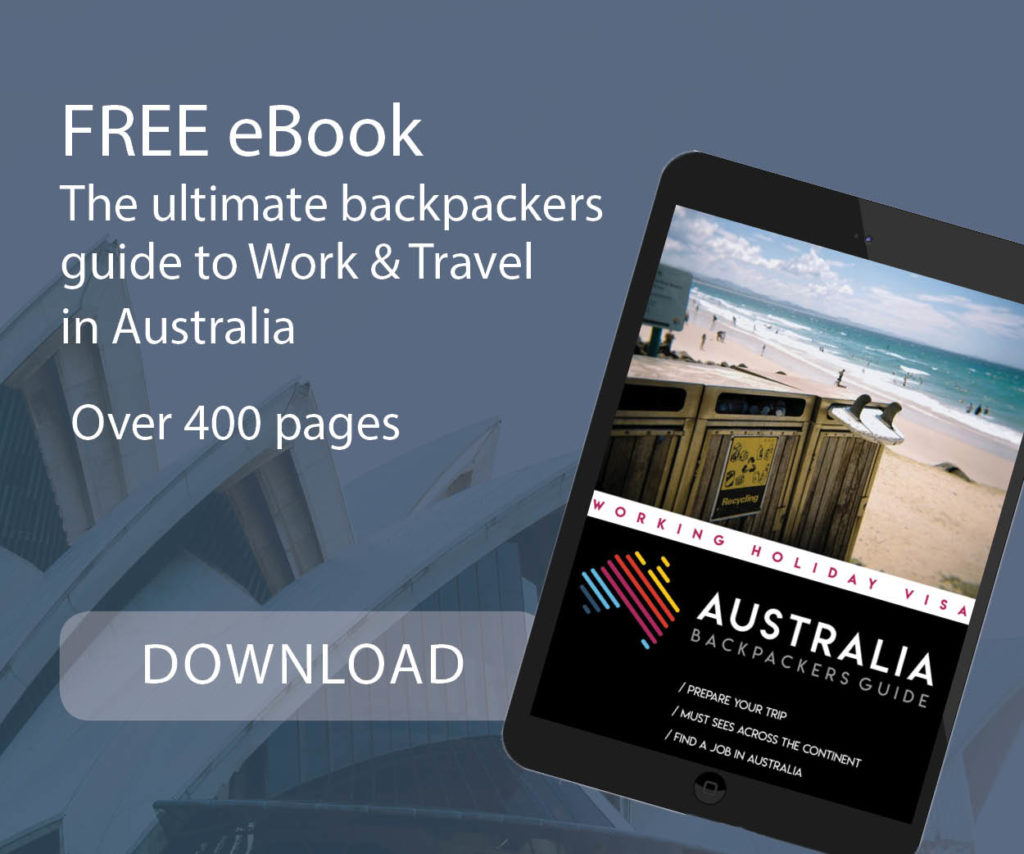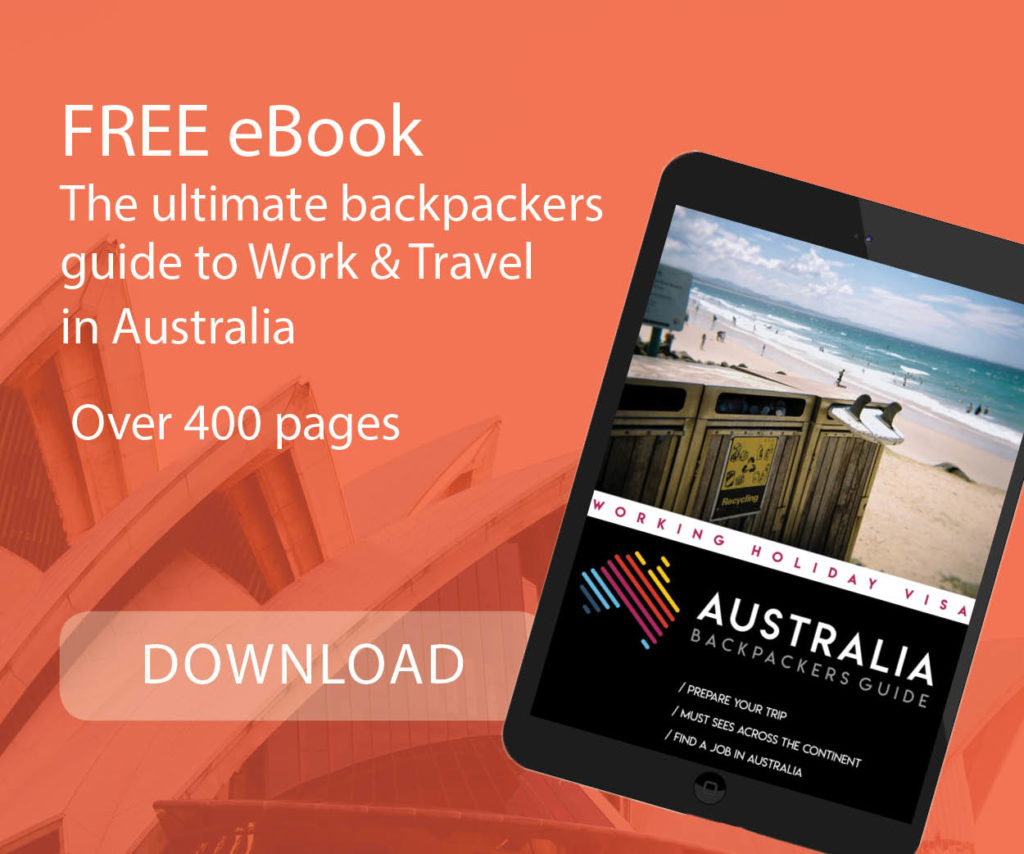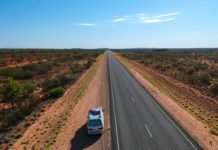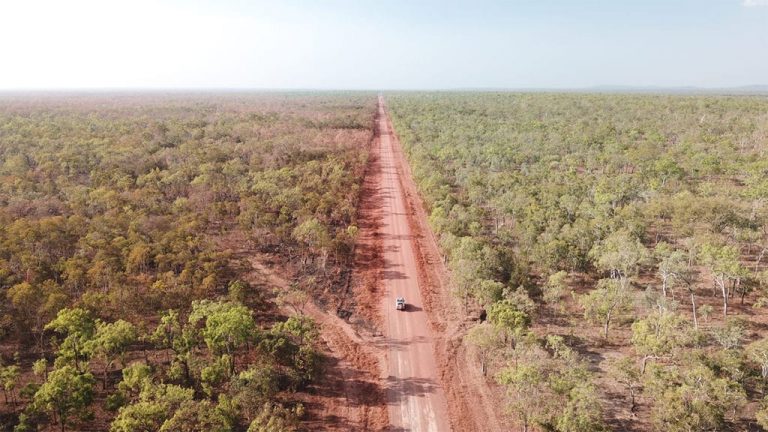
Are you ready for your road trip to Australia? Visiting the country by driving its endless roads and crossing its incredible landscapes will undoubtedly be one of the best experiences you’ll ever have. If you have your international licence in your pocket, an itinerary mapped out and your equipment prepared… then all you need to do is go. Before you set off, check out our information and tips for a smooth road trip in Australia.
Table of Contents
What you need to know for driving in Australia
Driving on the Left
In Australia, driving is on the left side. The steering wheel is on the right side of the car, and the gear shift is on the left. Driving on the left also means overtaking on the left and navigating roundabouts to the left, while still giving way to the right. If you come from a country where driving is on the left, no problem. For others, rest assured, it’s a mental adjustment that you will quickly get used to!
Speed Limits
Speed limits vary by state and territory in Australia. The signage is very clearly marked on the roads.
- In urban areas: 50 km/h is often the maximum speed allowed in cities.
- Near schools: The speed limit drops to between 25 km/h and 40 km/h during school entry and exit times.
- On highways: The maximum speed limit is 110 km/h, except in the Northern Territory where you can go up to 130 km/h, only on the Stuart Highway.
Radar controls are quite frequent. Exceeding speed limits results in a hefty fine and demerit points on your license.
Road Signage
The majority of road signs are similar to those seen in Europe:
- Yellow signs: they indicate a temporary change (construction, etc.)
- Green signs: they indicate major routes (expressways, highways, etc.)
- Brown signs: they indicate tourist routes and often include the letter T
- Yellow, orange, or red signs: they indicate a hazard (animals, flood risk, speed bumps, etc.)
Fuel & EV tips
In major cities: Gasoline in Australia is cheaper than in France, especially in urban areas. You will have no trouble finding it at affordable prices. There are mobile apps available to easily compare prices, depending on where you are. We recommend FuelMap.
Outside major cities: Gas stations are less common in rural areas. In the Outback, prices can be up to double those in Sydney or Melbourne. We advise equipping your vehicle with a jerry can. Fill it up at the cheaper stations. This is an effective way to save money during your road trip and avoid running out of gas in the middle of the desert. Remember that sometimes, gas stations can be up to 400 km apart. In any case, always make sure to check where the next gas station is on your route before embarking on a long journey. In remote areas, stations are often located in roadhouses, which include all commercial points: restaurant, gas station, motel, camping, etc
EV distances: New DC chargers at Port Augusta, Coober Pedy & Tennant Creek closed the 760 km gap on Stuart Hwy; still carry a Type 2 cable for 22 kW caravan‑park outlets.
International License and NAATI Translation
A driving license is mandatory for driving a vehicle in Australia. If you have a driving license from your home country, it is valid in Australia. However, if your license is not in English, you will need a translation of it. You have 2 options: Apply for an international license or have your national license translated by a NAATI accredited translator.
Note that some Australian states explicitly require a NAATI translation and no longer accept an international license (especially Queensland). Therefore, it is recommended to have your license translated to be compliant during your trip to Australia.
🪪 Official NAATI Translation of Your National Driver’s Licence
Getting an accredited translation is the fastest and most reliable way to drive legally in every Australian state. Our NAATI‑certified translators will translate your French, Belgian, Swiss, German, Deutsch, Italien, Spanish, Czech, Russian licence within 24 to 48 hours!
Plan around the seasons
| Region | Best months | Why | 2025 watch‑outs |
|---|---|---|---|
| Tropical North | May – Oct (dry) | Mild, low rain | Earlier cyclone onset Nov 2024 → check BOM maps |
| Red Centre | Mar – May & Aug – Sep | Cooler nights | New drone‑light show at Uluru – book months ahead |
| Southern Coast | Oct – Apr | Beach weather | Fuel surcharges +10 % Dec–Jan |
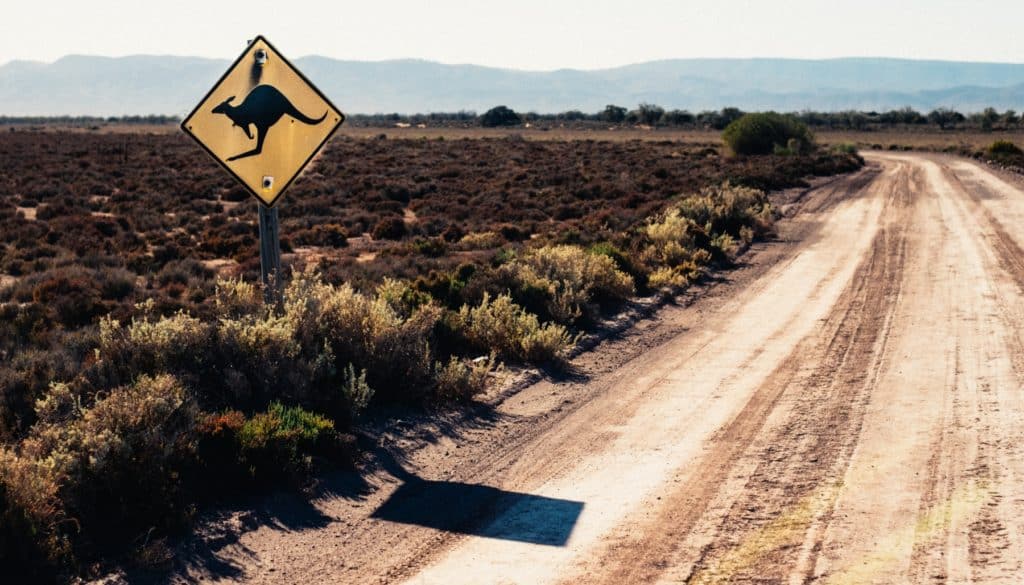
The road network in Australia
Australia is a huge country. Most of the country’s economic life and housing is concentrated near the coast. 85% of the population lives within 50 km of the sea. This is why the road is the best way to explore all the country’s places and get off the beaten track. Before setting off on your adventure, it is strongly recommended that you prepare your itinerary. It is not always possible to get from point A to point B without making a huge diversions.
For example: it is impossible to get from Alice Springs to Sydney via a direct route.
The roads are all in good to very good condition. However, you should take extra care when travelling through remote areas, especially in the north of the country, which can experience heavy rainfall during the rainy season.
Read also : Road Trip Australia : Itineraries ideas
Highways and tolls
The majority of highways in Australia are free. However, there are some sections that are toll roads, mainly around Sydney, Melbourne and Brisbane. These toll roads do not have physical toll booths that allow you to pay on entering or leaving the highway, as in Europe.
To pay, you have two options: either pay before you enter the road (by buying a pass on the internet or by phone), or pay afterwards (on the internet, which is usually more expensive). You have 2 to 3 days after your passage to pay. After that, you will be fined, in addition to the motorway fees to be paid.
💡 OUR ADVICE: Find out in advance if your journey includes any paying areas. Using the GPS on your smartphone, decide whether to use them or avoid them by adapting your route.
If you are using a motorway that is subject to a charge, make a note of the name of the section of motorway so that you can make your payment correctly online… or risk paying a fine.
Inform yourself about the Tolls Road depending on the cities: Queensland Toll Roads, NSW E-Toll, Roam Sydney, Melbourne Linkt, East Link Melbourne
Road conditions
The main roads are all sealed and well maintained. It is possible to drive around Australia by staying on a main road in good condition. It is even possible to drive from north to south through Uluru (contrary to what some people think). A conventional vehicle can perfectly well drive around the country using sealed roads.
Unsealed tracks are common in some areas of the country: Western Australia, Northern Territory, Red Centre…
Gravel roads or off-roads are generally found at the access to some national parks, lookouts and camping areas. Each track is more or less passable, as many are made of dirt or sand. Others will be accessible with a conventional vehicle (car, van), while others require a 4WD.
In the Outback, the gravel roads are more numerous and generally less frequented by tourists. Some roads can even be flooded, especially during the rainy season. If you come across a flooded road, stop and try to assess the depth first. Be even more careful in crocodile-infested areas. The best thing to do in this case is not to take any risks. Turn back and find another route to take.
🚐 5% Discount with Travellers Autobarn
Travellers Autobarn is offering a 5% discount to Australia Backpackers Guide readers with promo code GUIDEEN
Tips for safe driving
Don’t drive too fast, the road is unpredictable
As well as using a lot of fuel by driving fast, you risk hitting an animal head-on. Many kangaroos cross the road without warning.
In addition, speeding fines are more expensive in Australia than in Europe.
Wildlife & livestock
Kangaroos and other animals are particularly vulnerable near roads. The light from headlights attracts them and encourages them to cross in front of your vehicle.
- Peak kangaroo collision windows dawn 5–7 am, dusk 5–7 pm. Slow down to 80 km/h.
- In cattle station country (WA/NT), expect unfenced herds – drive with high‑beam & spotlights where legal.
- Report injured animals – WIRES 1300 094 737 (NSW), Wildcare 08 8645 5511 (SA/NT border).
Be courteous
Australians know the roads and have no qualms about overtaking you. Make it a habit to always pull over a little more than normal to let the vehicle behind you pass if it is going faster. Often there are lanes on the road for slow vehicles.
In Australia, people greet each other all the time. Even when driving! Don’t be surprised if you get little hand signals.
Anticipate your fuel needs
Petrol stations are quite far from each other in some parts of Australia, so don’t get trapped. Avoid driving with less than a third of a tank of petrol. Carry a spare can of petrol, which you can hang from the roof of your vehicle.
In the event of a breakdown
Remember to take out insurance if you are going on a road trip in Australia! In the event of a breakdown, it is advisable to stay close to your vehicle. Always remember to bring water and food supplies. Especially if you are travelling in the outback on roads with little traffic.
Road‑trains & overtaking
- Length up to 56 m in WA/NT. Need 1 km clear road.
- Pull over safely; air‑wash can yank doors – hold steering wheel firmly.
- Keep UHF 40 handy; call “Overtaking westbound at 110 marker”.
Beware of gravel / unsealed roads in the outback
Before crossing the Outback or any other desert plains (Stuart Highway, Nullarbor Plain, Savannah Way) BE AWARE. You should have a minimum knowledge of the route ahead and the road conditions. Fires and flooding can be frequent depending on the season.
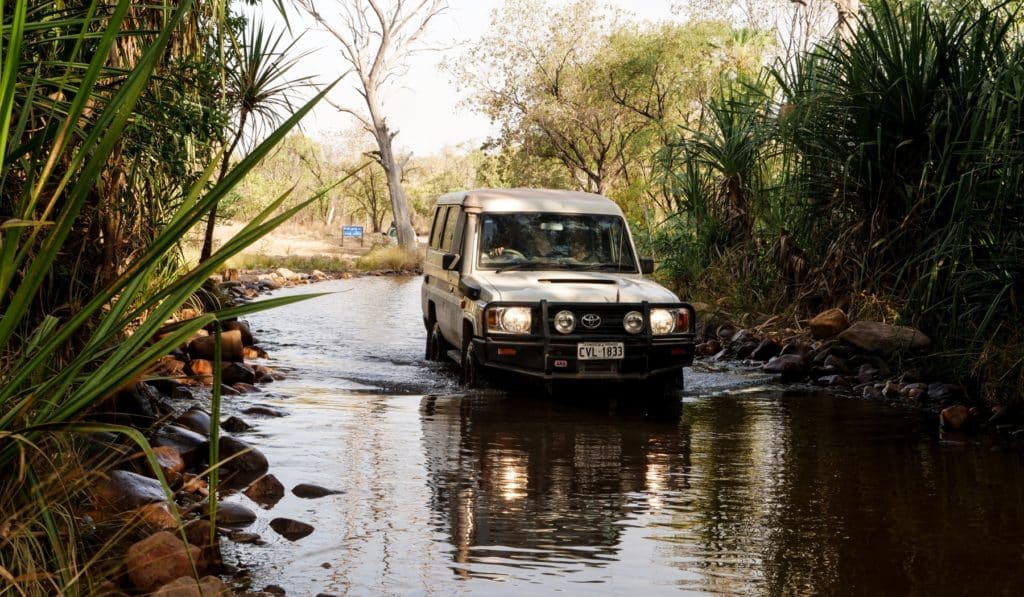
Have a rest!
Have a break every two hours or so. If you are traveling with several people, take turn to make sure everyone get a rest. There are many free rest areas offer Driver Reviver coffee (Fri–Mon, holidays).
Stock Up
Store enough drinking water and food supplies for your journey, especially if you are exploring remote areas.
Don’t skip travel insurance
Don’t forget that an ambulance call‑out is up to $1 200 except TAS/QLD. So subscribe a health insurance policy for your trip in Australia.
💸 10% Discount on your Insurance Policy
Find here all the information you need and get your 10% Go walkabout promo code for any policy.
Fines in Australia
Fines amount
As with all regulations, the cost of traffic fines varies from state to state. The fines most commonly issued to backpackers include: improper parking, speeding, illegal wild camping, and failing to wear a seat belt.
However, assume that the rates for these offences are within this range:
- Speeding: from $153 for speeding between 1 and 10 km/h. And from $607 for speeding over 45 km/h.
- Failure of the driver to wear a seatbelt: $300 / by a passenger: $300
- Blood alcohol: from $1100.
To find out more about the cost of fines by state, visit the official government websites of each state: NSW, QLD, SA, VIC, NT, WA, TAS.
New road rules you can’t ignore
- Nation‑wide Mobile‑Phone Detection Cameras – fines up to A$1,161 + 10 points (QLD double demerit).
- AI seat‑belt cameras piloting VIC/WA 2025; expect instant $380 fines.
- Queensland cut some Bruce Hwy sections from 110 → 100 km/h (July 2024).
- NSW high‑season campground Tier 3 $89 starts Dec 2025.
- Plastic bans – single‑use cutlery, plates & balloon sticks illegal AUS‑wide.
How to pay fines in Australia?
If you are unsure where to pay your fines, simply type ‘pay fine Australia’ into Google. Add the name of the state you are in to your search, and you will be redirected.
Paying fines in Queensland: here
For Western Australia: here
Paying fines in South Australia: here
Paying fines in New South Wales: here
In Victoria: here
Paying fines in Tasmania: here
Paying fines in the Northern Territory: here.
Vehicle maintenance
The climate in Australia varies greatly from state to state and can be very powerful (heat, fire, wind, snow). To keep your vehicle in good working order, it is important to carry out regular checks. This will avoid unpleasant surprises during your road trip.
The inside of the vehicle
Oil level and coolant level (green): check weekly. They are located under the bonnet of your vehicle.
Maintenance of the interior: to avoid rapid wear and tear, remember to regularly clean textiles (carpets, rugs, seats), plastic surfaces (dashboard, steering wheel, door interiors), the windscreen and windows.
The exterior of the vehicle
Wind and rain carry sand and salt which can quickly damage your vehicle. In case of bad weather, put your vehicle under cover. If possible, or plan to take it to a car wash the following day.
If you are driving on the beach with a 4WD, check the pressure of your tyres. And remember to wash your vehicle as soon as you hit the road.
Tyre condition and pressure should be checked once a month.
Download the complete Guide for a Road Trip on the East Coast
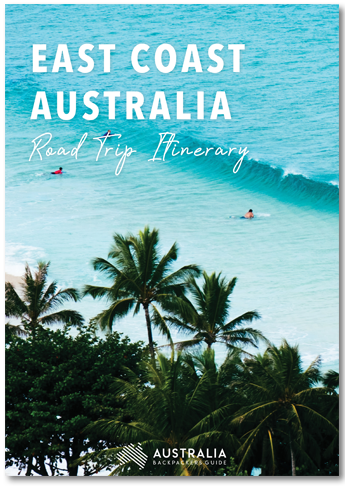
Our FREE 52-page guide brings together all the info you need for your East Coast Road Trip in Australia:
- Preparations (seasons, budget)
- All the best spots to visit on the coast
- The best tours & activities
- Spots to park and sleep in a campervan





